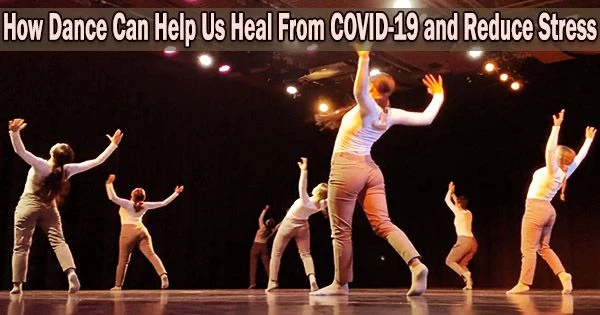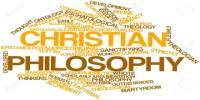The COVID-19 epidemic led to an increase in mental health concerns in the United States, but it also led to an increase in interest in art-making, which has given us new ways to deal creatively with the uncertainty and limitations of daily life.
While COVID has brought to light some previously unrecognized negative health effects of seclusion and lockdowns, such as PTSD and loneliness, there have also been innovative solutions and treatments suggested by healthcare experts to assist their patients and members of the community. These artistic and aesthetic experiences can take many different forms, such as theater performances, dance lessons, and museum trips.
But how does dancing specifically work toward managing, rebuilding, or even healing us from a collective and traumatic experience like COVID?
COVID Rapidly Reframed Our Experiences With Gathering and Creating Together
“The experience of COVID has changed your nervous system,” says Shira Karman, a body-oriented psychotherapist and adjunct professor of dance movement therapy and psychotherapy at Lesley University. “It’s not just an emotional reaction. We’re having a biological reaction. Our nervous systems are being changed by the messages ‘don’t touch’ each other.”
Dancing and other group activities appeared to be impossible until virtual gatherings quickly became frequent due to the repeated warnings to socially isolate oneself, wear masks, and steer clear of large gatherings during the peak of COVID.
As isolation and lockdowns gave rise to reports of domestic and child abuse in countries such as China, researchers Dr. Ilene Serlin and Grace Zhou focused on a group of hotline callers contending with anxiety and abuse fears in Beijing, as well as the hotline’s counselors and psychologists monitoring the counselors experiencing their “own exhaustion” and “caregiver burnout.” In order to help the hotline callers and the psychologists process the trauma they were experiencing, they advised dance movement therapy (DMT).
Serlin and Zhou designed “Zoom Tool Kits” that used DMT techniques for the hotline callers and supervisors to feel safe and understood in a virtual space. Participants regained emotional stability and learnt to replicate others’ motions by watching a video series made by Serlin and Zhou.
“As the emotions are embedded in symbolic movements, such as reaching upward for hope or vigorously reaching down to plant the seeds, the participants had a chance to experience emotional shifts without needing to name or share them verbally with others,” note Serlin and Zhou. “This can allow for greater freedom of expression and release.”
One of the things that dance movement therapy used early on in the profession was this idea of mirroring in movement, and we have an understanding of why that can be so powerful. You are building trust without conversation. It’s a profound experience to have someone actually pay attention to you deeply enough to follow your movement.
Professor Shira Karman
How Dancing Communally Can Build Back Connection and Community
While dancing might aid in our personal COVID processing, it might also favorably reframe our social identity in a group environment outside of COVID, whether online or in person.
Karman points to the advantages of using dance to process the pandemic, which involve the body’s neurons related to empathy, known as mirror neurons: “They help us learn both skills and social behavior,” notes Karman. “One of the things that dance movement therapy used early on in the profession was this idea of mirroring in movement, and we have an understanding of why that can be so powerful. You are building trust without conversation. It’s a profound experience to have someone actually pay attention to you deeply enough to follow your movement.”
Research demonstrates that dancing with others, whether virtually or in person, offers advantages. We already know that dancing alone for even five minutes at home can enhance mental wellbeing. Neural synchronization that occurs when we move in concert with others makes us feel closer to one another.
In analyzing a group of high schoolers dancing together, one study noted that “two key elements synchronization and exertion independently elevate pain thresholds and encourage bonding” in an in-person setting. Through bonding, dance can provide a social safety net for others to feel seen and understood. “You’re not doing a solo experience anymore,” says Karman. “It builds the safety the emotional, physical mirroring that ‘I’m understood’ and ‘I understand you.’”
Recognizing that some participants may have greater proficiency in dance than others when gathering, a 2022 report authored by Dr. Julia C. Basso and colleagues at Virginia Tech University highlighted the benefits of taking part in just one dance class: “Regarding dance history, our data revealed that the most novice dancers (i.e., those with the fewest years of dance experience) experienced the largest gains in positive affective state.”
The authors of the report, which analyzed findings from a virtual dance program in the U.S., noted that “this is one of the first reports to examine the association between dance history and changes in mental health after a single session of online dance.”
The Health Benefits of Dancing Together
Of course, there are noted physical benefits too: Reduced cortisol levels, lessened tension, and improved balance are all benefits of dancing. A number of dance studios and companies moved their operations online, including Dance for PD, which gained popularity and provided people with Parkinson’s disease and their families with a secure space to feel connected, empowered, and engaged.
According to Dance to Health’s 2020 report, which was then highlighted in the Aspen Institute and Johns Hopkins University’s NeuroArts Blueprint, the dance program saw a 58 percent reduction in injuries while it was fully operational during COVID. Dance to Health was created to help older populations in the United Kingdom avoid falling injuries.
As psychiatrist Carl Jung noted, “Loneliness does not come from having no people about one, but from being unable to communicate the things that seem important to oneself.”
The advantages of mirroring and moving with one other may ultimately help us reconnect to ourselves and those in our communities as we continue to comprehend COVID-19 and its implications on society. Additionally, including more dancing and movement into our daily lives might well aid in our collective recovery from the pandemic.
















